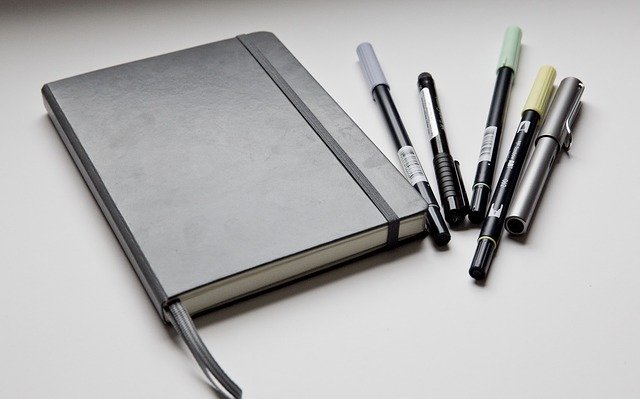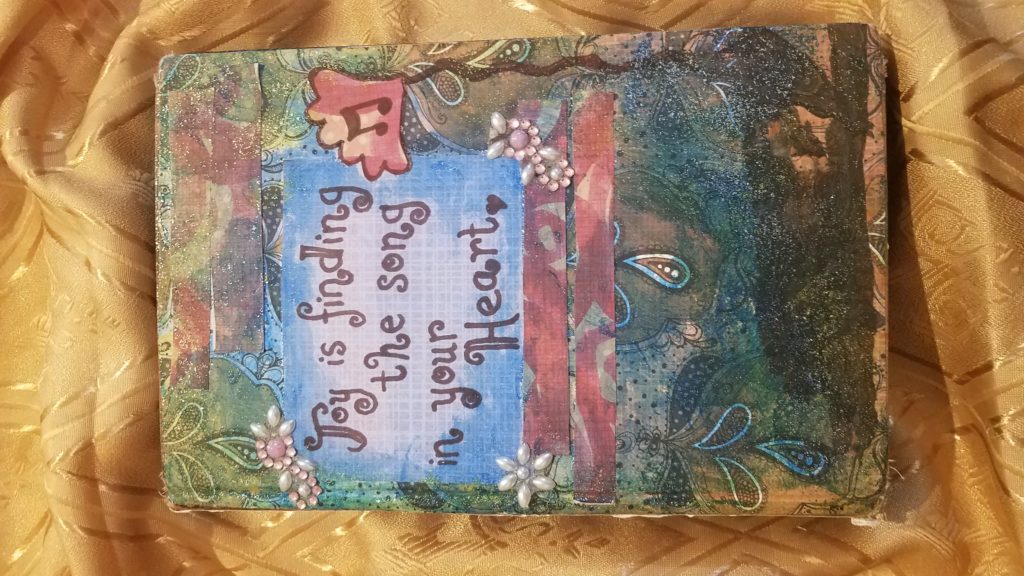Learn how anyone can create an art journal for creative expression – today.

In this post, I’ll share some of the benefits of art journaling (there are lots of them!) and I’ll describe practical ways for you to actually start your own art journal.
In my opinion, as an artist and art therapist, now’s the perfect time to start an art journal. While I really believe that anytime is a good time, now is different.
I’ll tell you why.
It’s because of the world has undergone MAJOR changes this year, in 2020, that have impacted everyone. And most of us are still reeling from some of that.
Covid-19 has got me thinking a lot about the changes that our society is dealing with. Being in the midst of a global pandemic has caused major shifts for everyone. Whether physical, social, economic or spiritual, this virus has created a major life shakeup.
You might be wondering, “What does that have to do with journaling?”
Well, there are many benefits to art journaling. For beginners, journaling is an easy way to get started with creative expression. And for experienced creators and artists, journaling has a way of generating new ideas and keeping the creative juices flowing.
For all of us, journaling can be an AMAZING way to release stress. If you are stuck at home, being creative is a way to find inspiration. It’s also a great way to focus during these uncertain times, where uncertainty has become the norm.
Think about your art journal as a space just for you. Even if you choose to share your art with others – and I hope you will – you can still find your own private space inside the nuances of your art in your journal.
Are you convinced? I hope so!
In that case, welcome to art journaling, a wonderful source of self-expression, healing, and stress relief!
What will you need? Not much.
To get started, art journaling requires very few supplies. You might find that as you make progress in your journal, you’ll want more art materials, but for now, you can start with a pen and a notebook (I prefer unlined).
If you don’t have a notebook, you can improvise with an old book for your journal, and draw on top or around the text, or even use a stack of plain paper.
I think that art – whether drawing or other creative work – is always more fun in color, so if you have colored pens, pencils, or crayons, take ’em out.
Some people are going to use their journal as a sketchbook, which means that for the most part, you are drawing.
Others like to use other creative materials to journal, building collages or multi media artwork.
If you are looking for a variety of supplies, you can find them even if you are stuck at home. You can use stuff you’ve already got in the house. No paint? Experiment with food coloring or spices (like turmeric or paprika) dissolved in water to add color to a drawing.
Magazines and newspapers are great for collage. And, you can make your own glue with ingredients from your kitchen.
The kitchen and bathroom closet are both great resources for art supplies.Cotton, swabs, toothbrushes and toothpicks make wonderful brushes. Tissues and cardboard rolls make great art supplies, too!
Then, before you actually being, find a place to do your journal. That can be the kitchen table, your desk, or a room that you designate. You’ll need a clear surface to work on and place to lay out your art supplies.
Then what? How do you actually start your art journal?
Because your art journal is a creative diary of your own, it’s a good opportunity to explore and learn about yourself. Both the content of your journal entries and the process of creating them can be insightful when you stop to learn more about you. As you use art to express yourself, you can follow specific art prompts, or you can let your art unfold spontaneously.
To take that first step – take a pencil or a brush (or any other drawing material) and lay it on your paper and draw. Just START on the first page. If you need an idea for your first entry, I recommend that you create an artistic introduction of yourself. Use your art/drawing to answer the question of “Who am I?”
In this first journal entry, make the time to let your art process unfold. Let yourself make mistakes without needing to correct them. Whatever unfolds, respect it. Let it be what it becomes.
When you decide that your entry is finished, label it with the date. Some people like to write a summary of their artistic process on the other side of the page. It’s up to you, of course.
You can find more specific ideas for your art journal in this post of 25 creative art journal prompts. Or, you can use your own ideas, and let yourself be creative.
Don’t forget, this is for you, about you, and it’s good for you! If you are interested in learning more about how journaling can help, read this article about how others have been using journaling for self-care during COVID-19.
And, most importantly, slow down and enjoy the experience of getting creative!
I have a feeling that you’ll love it.
Tip: Learn about art as therapy in my quick guidelines for doing art as therapy at home.

